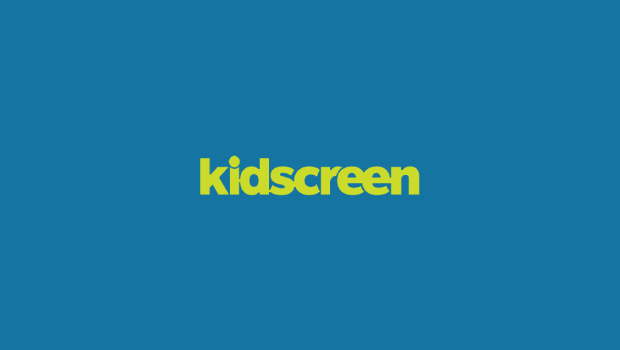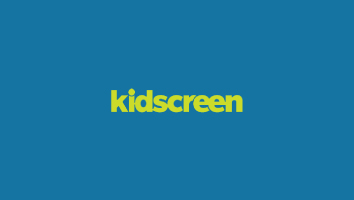Does educational programming that tackles issues like the environment and cultural diversity have a role to play in the international commercial kids broadcasting landscape? That’s the question we threw out at a roundtable discussion between broadcast execs and producers held in New York just before KidScreen Summit in February. Read on, the conclusions may surprise you.
Paul Robinson, MD of pan-regional net KidsCo: As a parent, I believe television has a responsibility to have an educational component. We have responsibilities to shareholders, but we also have them to the kids and parents who watch our programming, and I don’t think the two are incompatible. I think you can produce entertaining, fun TV that makes a profit for your company, but has educational values and qualities woven in.
Jenny Buckland, CEO, Australian Children’s Television Foundation: We produce TV that gets repurposed for use in classrooms; it’s not didactic. What schools do with our programs is pull them apart and use them to teach social and cultural issues. We think that’s a very compatible use for content and perhaps something that content isn’t often used for when its made for commercial TV.
Azeizul Abdulla, portfolio manager, Malaysian Multimedia Development Corporation (MDEC): I think parents want their kids to watch what they can benefit and learn from. In Malaysia we tend to fund what fits our moral code. I think there is potential business-wise because of that.
Brenda Nietupski, director of programming, Treehouse: Canada does not have a regulatory body to mandate educational content. Treehouse doesn’t focus on educational programming, but quality and entertaining programming – if it has an educational element, all the better. But it needs to be entertaining and accessible. What’s really important to us is trying to simplify concepts like environmental awareness and diversity for our audience – those are all very important types of learning for us.
Ismal Mohamed, senior executive, MDEC: The concerns we encounter again and again are around issues of how you localize for educational content and how you differentiate between what one country defines as educational from another.
Lana Castleman, editor, KidScreen: One of the biggest challenges revolves around making this type of programming interesting for older kids. Do you agree?
Buckland: Older kids don’t want a message stuffed down their throats, but I think the same things apply – general values and emotional learning, and all good drama is laden with values that can be used in an educational setting.
Nietupski: When we talk about entertaining kids, humor is one of best ways to make anything educational stick. It also has to reflect kids’ perspectives, you really have to get to their level.
Abdulla: I think it’s harder for eight to 12s; they have their own mindsets, and educational content can only be conveyed through their interests.
Robinson: That’s a really good point. The other thing is, kids eight to 12 are going to watch what they want. With preschoolers, parents largely make the decision, but with eight to 12s, it’s all about choice – you’ve got to engage them immediately, you’re competing with so many other things.
Castleman: As the target age group moves up, have you found it’s more difficult to find social and emotional values that transcend cultures to underpin an educational show that travels?
Haji Burnhanuddin, MD, Les Copaques Productions: As a commercial producer coming from Asia, to make money and to hit globally, it’s difficult. You don’t want your show just to fill airtime, you want people to see it.
Robinson: We had some interesting discussions [with our co-production partner Inspidea on Boo and Me]. What they brought was an understanding of the Malaysian market and hopefully we brought a Western point of view. Ultimately we benefited from each other’s point of view and experience.
Chin Joo (CJ) See, sales & marketing director, Inspidea: We had a lot of debates about how we should approach the story to Boo and Me. We had to find a common ground between two cultures. From a production standpoint as to whether educational content is commercially viable, it’s a matter of finding the right partner. KidsCo added another element that we wouldn’t have been able to achieve if we had produced just at home.
Robinson: You need mutual respect and two quite strong partners. What’s interesting is that Inspidea argued very strongly to keep certain Malaysian icons, and though people outside of Malaysia wouldn’t recognize them, we kept them. It gave it an authenticity that grounded the series in its home, but overarching stories and characters were about themes that have universal appeal. In the Middle East we’ve been inundated with press requests for this show even though it was never designed for that market. So it can be done. It takes a lot of work and you’ve got to be very open to challenging your conventional wisdom.
Buckland: I also think today’s children, perhaps more than we were, are children of the world and are very interested, for example, in knowing things like what a Malaysian fruit is or what other cultures are like – they more readily accept different kinds of programming
Mohamed: I believe that the Nicks and Disneys of the world must play a role. They need to tell us what they really want, provide clear guidelines on what they find educational by age group and what’s relevant and what’s not, rather than approaching the broadcaster after the show’s made and ending up with 13 episodes of something no one will buy.
Castleman: When there are no set standards that you have to abide by in providing educational content, what drives commercial broadcasters to do so?
Nietupski: There’s a real market for it. We’re the number-one preschool network in Canada because we listen to what viewers want. We, in a way, are self-regulated.
Buckland: You could define almost anything as being educational, if you were creative enough, so I don’t think regulations that require commercial broadcasters to provide educational content are particularly useful.
See: From a production standpoint, I think less regulation is more.
Nietupski: I totally agree with that…In a situation where regulations come into play, I’ve had producers say, ‘You’re going to want this program because it’s so educational.’ Then you look at the show, and it’s so didactic you think is that what the regulations are creating?
Robinson: I’ve felt that too. Is there one thing that you’d each like to see changing, that would make a difference for you?
Nietupski: We’re trying to access more cultural material, and particularly with preschool there’s an idea that you can influence young minds because it’s a time when you have the most capacity and influence to draw attention to issues like the environment in a gentle, non-scary way.
Burhanuddin: Programs coming from Asia must be given a chance to be shown outside of Asia. We see only the top shows from North America or Europe; it only goes one way. We’re asking to give us a chance.
Robinson: Children don’t necessarily discriminate and would accept content from all over the world. And, if you do it right, you can weave in the educational elements very nicely, including exposing children to other cultures and other tastes from around the world – I think they’re very open to that.
Mohamed: The problem is children don’t acquire content, the broadcasters do.
Buckland: The broadcasters are the gatekeepers, and certainly it would be wonderful to have more diverse content. The US dominates and it’s English-speaking. And it’s a challenge that would be wonderful if we could overcome it. I think the kids would watch and be interested; it’s a question of how we get it in front of them.





















